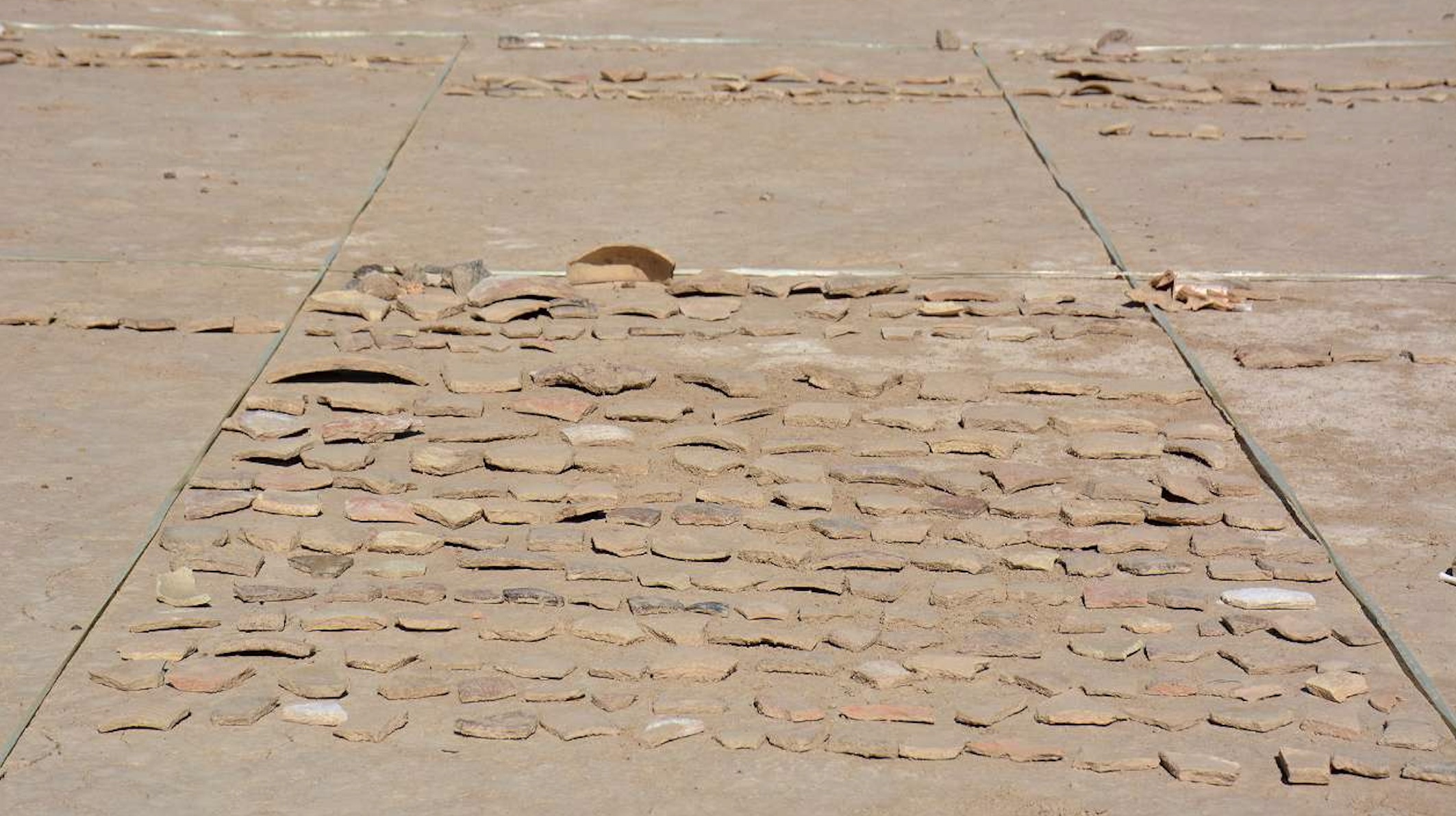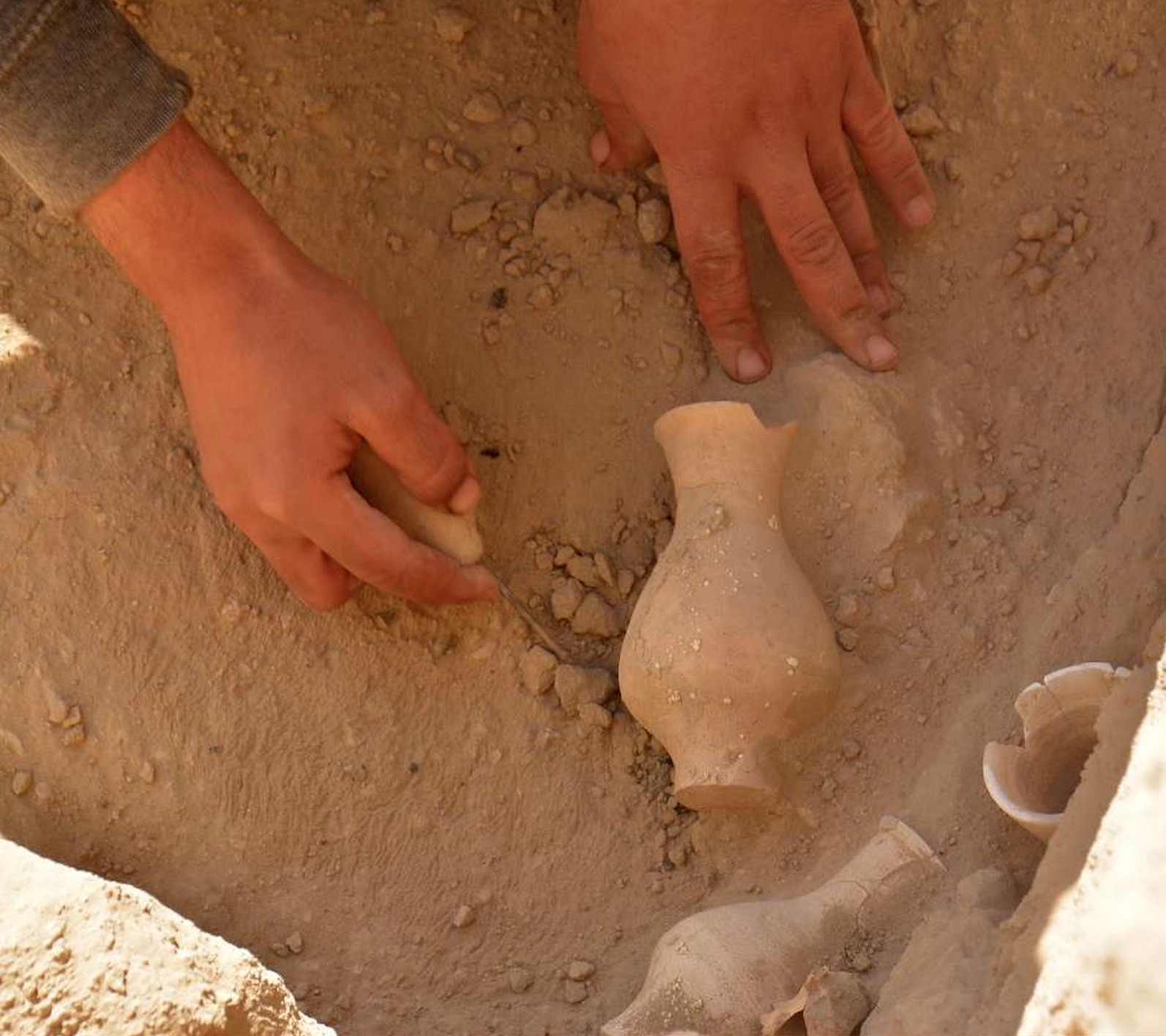The article “Shahr e Sokhta yields rare 4000 year old relics” was reported in Payvand News on December 28, 2018. Readers are also referred to the articles below (pertaining to Shahr e Sokhta or “Burnt City”) in Kavehfarrokh.com archived in the section entitled “The Pre-Achaemenid Era“:
- World’s oldest known artificial eye
- World’s oldest Backgammon game?
- Ancient measuring ruler
- Reconstruction of the Face of a 5000-year old Woman in Iran
- World’s Oldest Example of Pictorial Animation
======================================================================================
Iran’s UNESCO-registered Shahr-e Sokhta has yielded tens of rare relics which date back to over 4000 years ago, as reported by IRNA. Senior archaeologist Seyyed Mansour Seyyed Sajjadi who led the site’s 17th archaeological season, avers as follows:
“A total of 26 burial chambers have been unearthed recently that led to discovery of potteries, beads, small metal objects and a piece of marble torch … The excavated objects date from a time span between 4800 to 4200 years ago … Significant part of our research in Shahr-e Sokhta deals with studies in botanical archeology and anthropology …”
Shahr-e Sokhta, meaning ‘Burnt City’, is located at the junction of Bronze Age trade routes crossing the Iranian plateau. The remains of the mudbrick city represent the emergence of the first complex societies in eastern Iran.

Excavation of tiles at Shahr e Sokhta (Source: Payvand News).
Founded around 3200 BC, it was populated during four main periods up to 1800 BC, during which time there developed several distinct areas within the city: those where monuments were built, and separate quarters for housing, burial and manufacture.

Excavation of artifacts (small jars or vases) at Shahr e Sokhta (Source: Payvand News).
According to UNESCO, diversions in water courses and climate change led to the eventual abandonment of the city in the early second millennium. The structures, burial grounds and large number of significant artefacts unearthed there, and their well-preserved state due to the dry desert climate, make this site a rich source of information regarding the emergence of complex societies and contacts between them in the third millennium BC.



